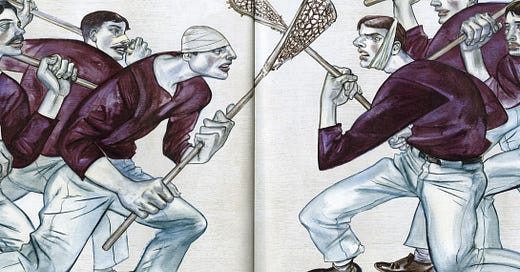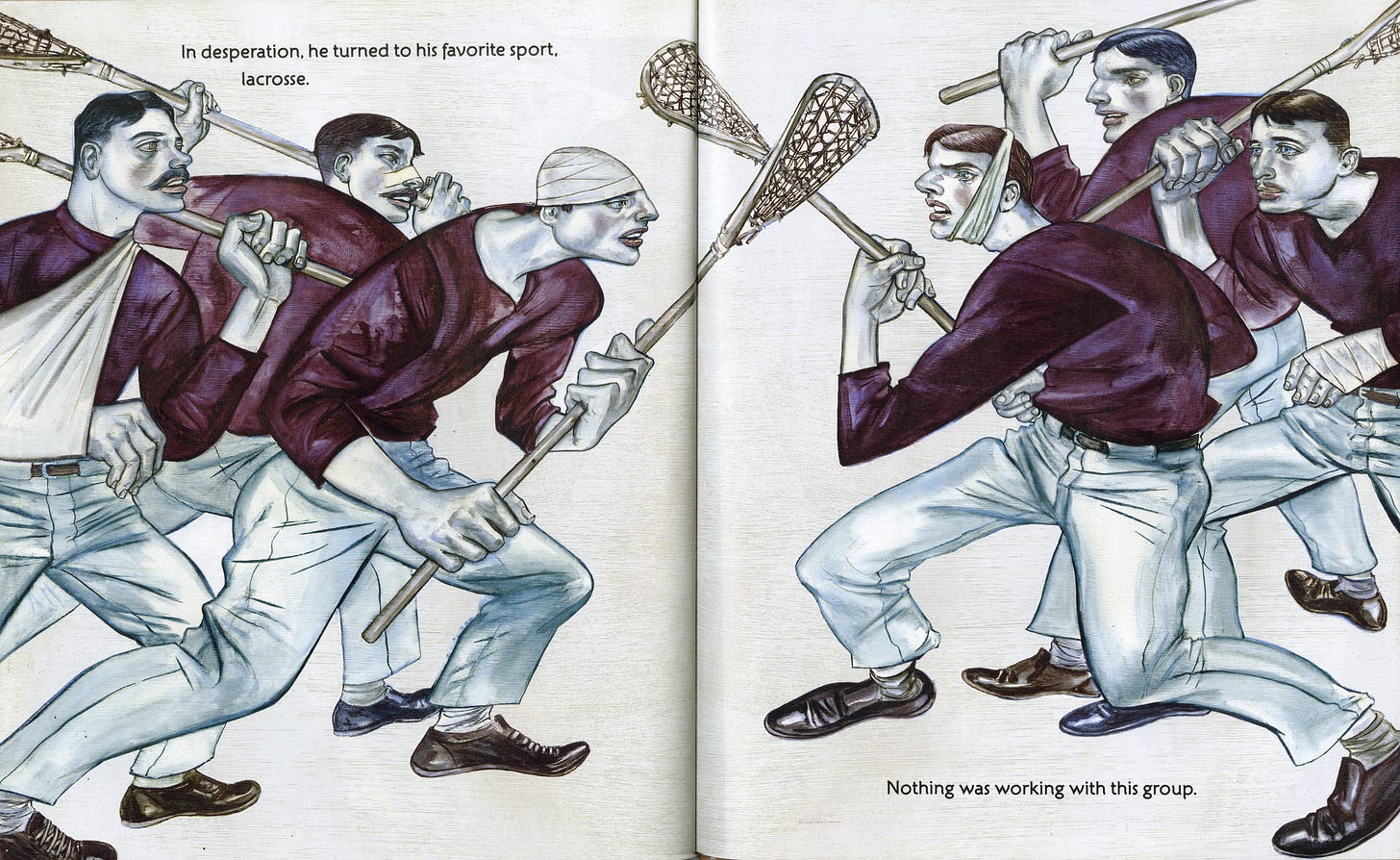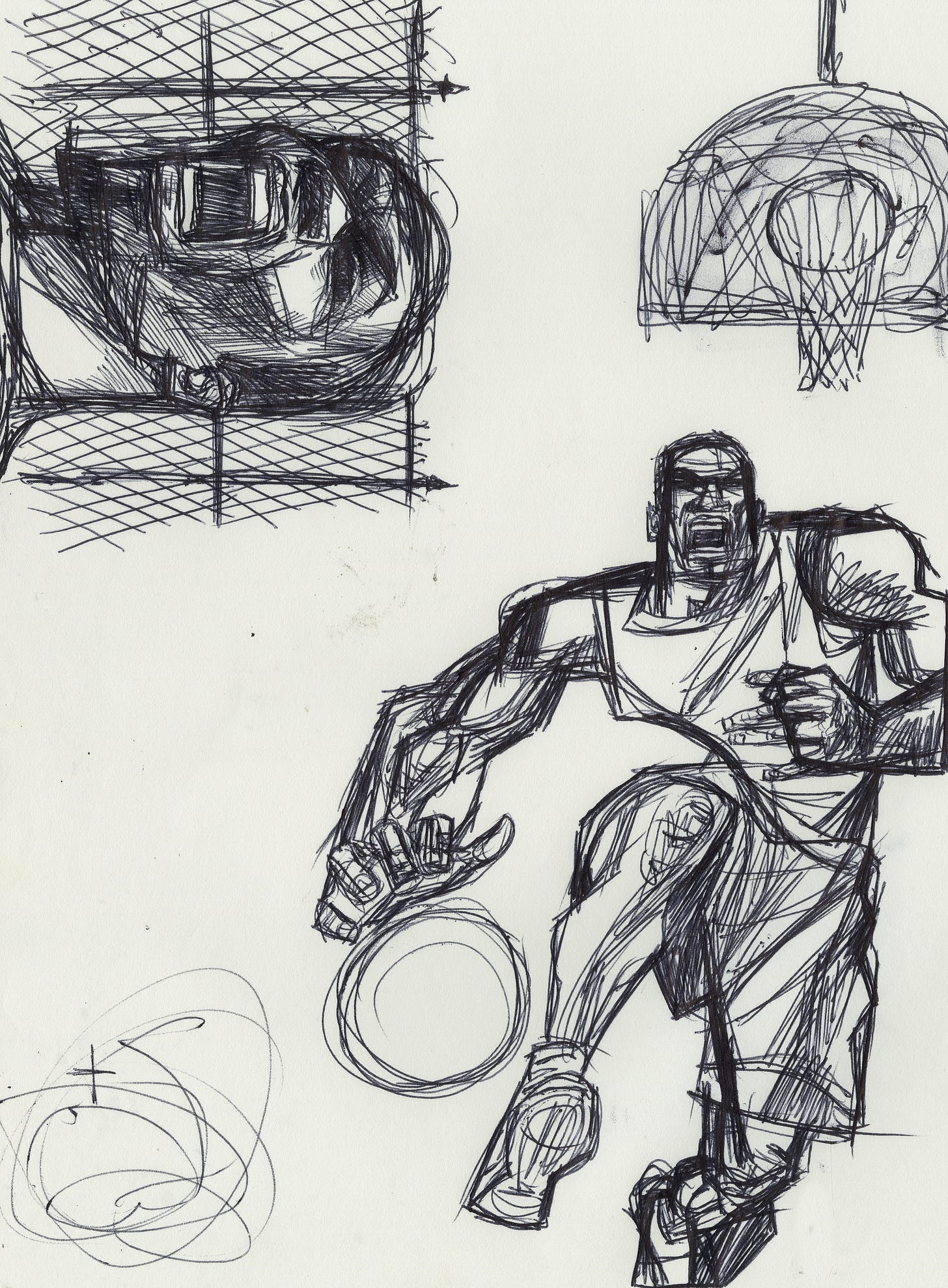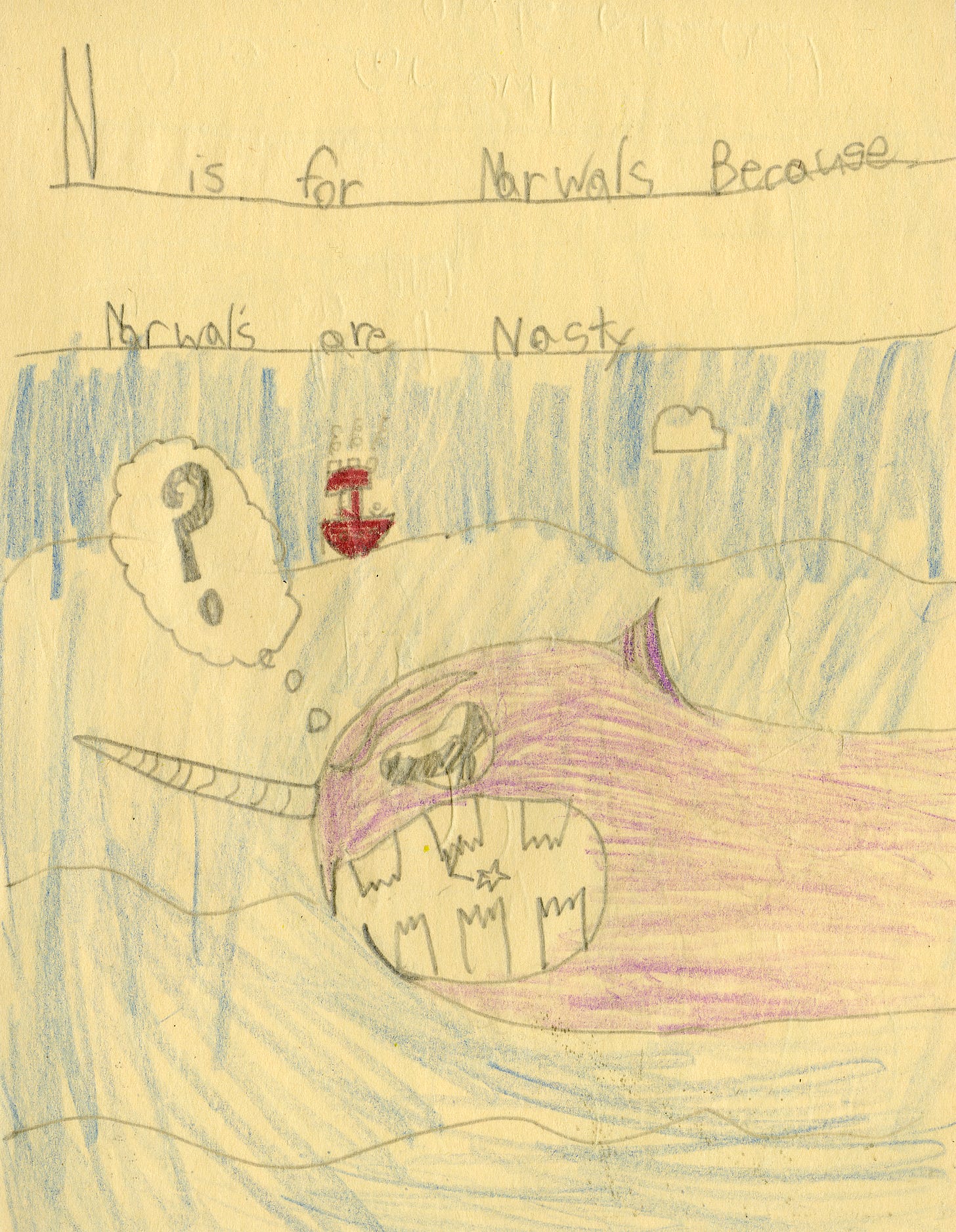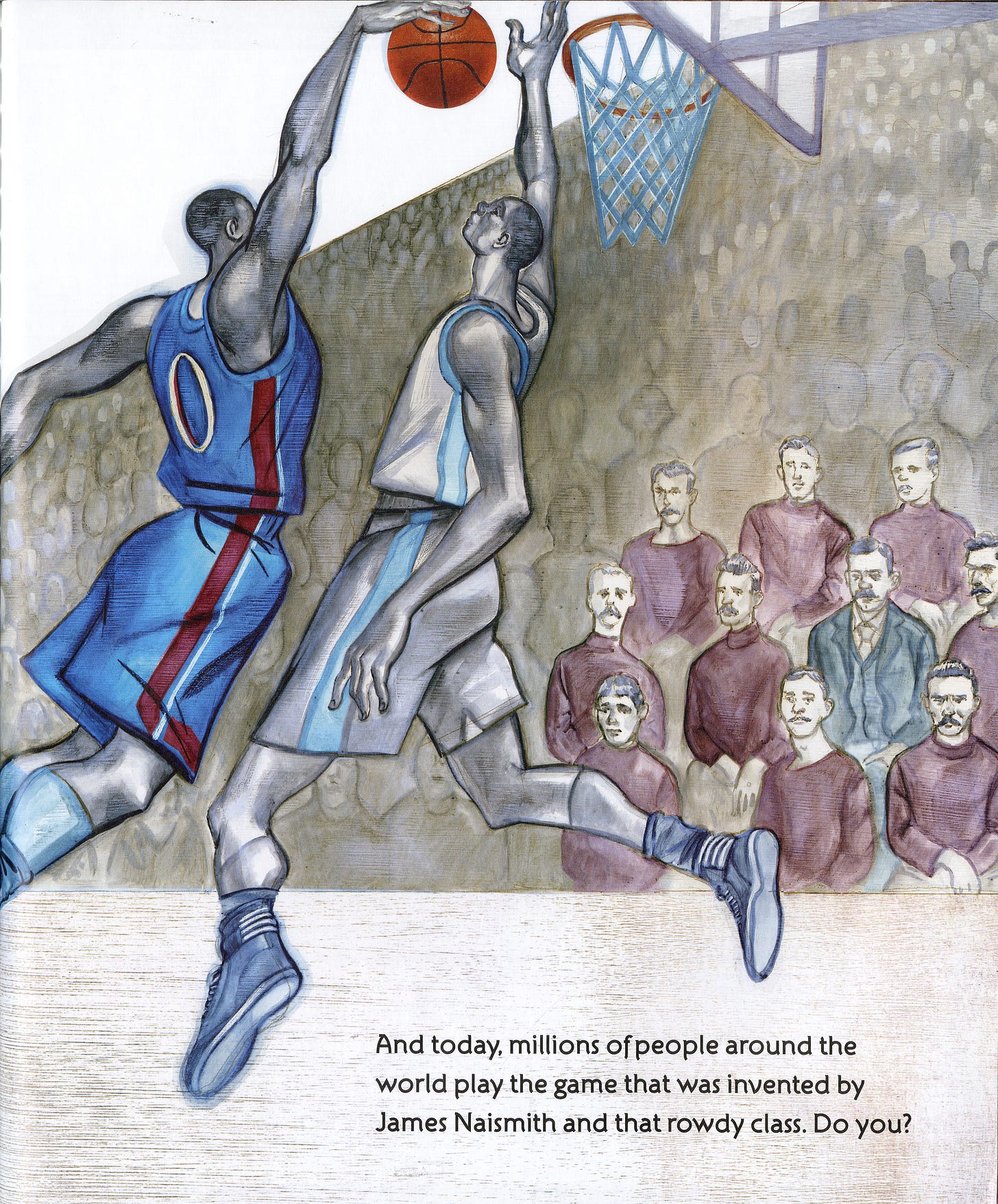In December of 1891 in Springfield Massachusetts, a teacher at the YMCA Training School hung the 13 rules for a new game in his school gym. The school was training young men for some of the new jobs that the changing economy was creating. The sports program was seen as a necessary part of a healthy education in the 1890’s, but typically involved calisthenics or marching. The young men despised the classes. This young teacher had a better idea after failed attempts at indoor football, soccer, and lacrosse ended in a broken arm, black eyes, and numerous abrasions. He devised a game of passing and throwing a ball with a goal off the ground.
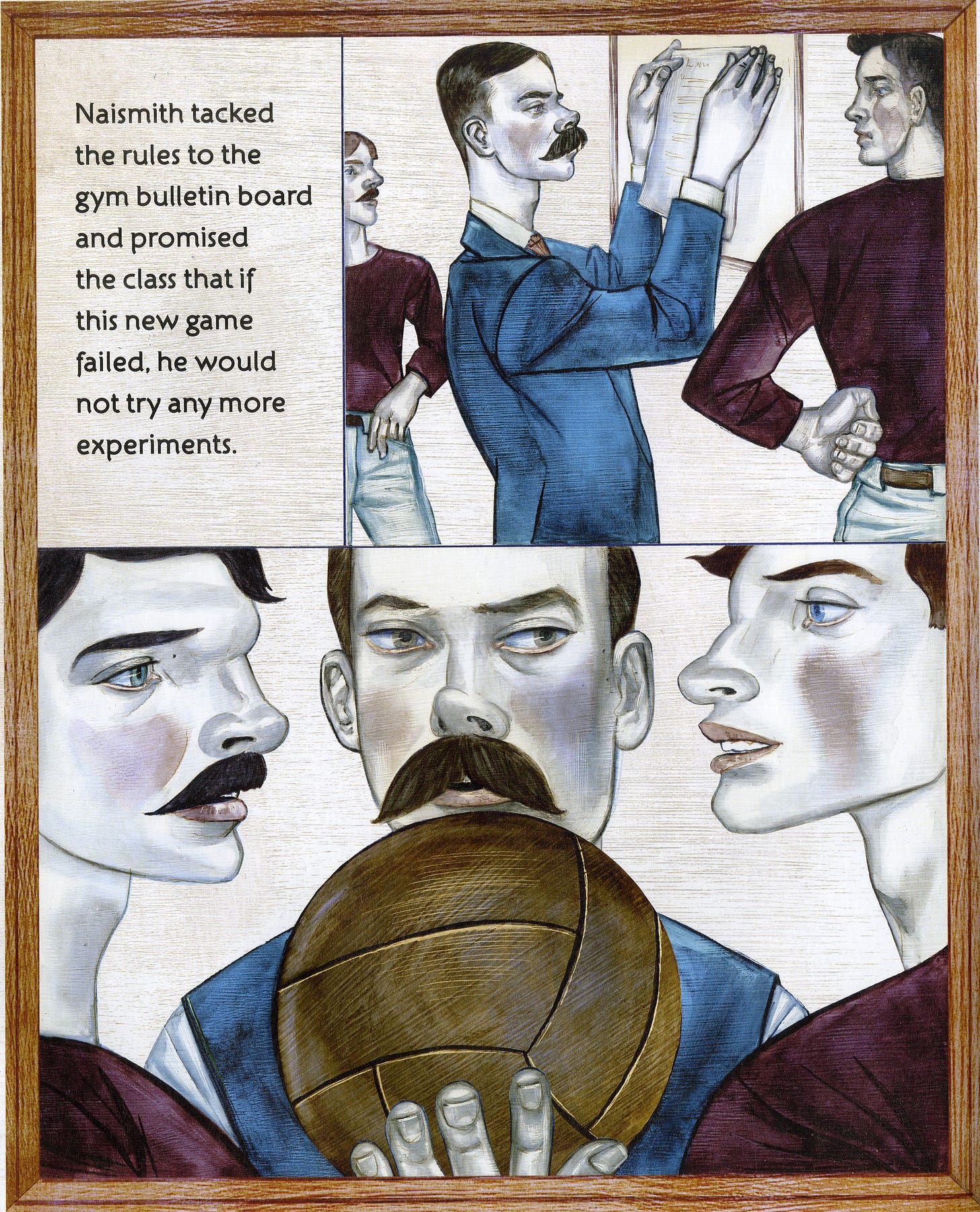
James Naismith invented basketball based on a game he played as a child with an arcing throw and the rest developed by fluke and chance. He wanted square boxes like a soccer net and the school janitor only had peach baskets—the round net was born. So few baskets were scored that poking a small hole in the basket bottom for a broom handle to push out the ball was the first innovation. The first net baskets were based on other nets, they were tied at the bottom with a release. The idea of the ball going through the net made no sense—-nets capture the ball or puck so that a goal can be seen to be scored. But a brilliant designer thought up the tapered net, so that the ball is slowed down enough so that it can be seen as it exits the net. The backboard was never meant to bank the ball in, it was created to guard the net from opposing fans on the mezzanines above who would bring broom handles to attempt to swat the ball from entering the basket.
I have a modest proposal, why don’t we just close down all these basketball leagues and their unfairly heighted players and go all in on NBA 2K video gaming? Everyone who wants to play will be able to and the creativity of the game will take off. Who needs all that practice and hard work? ……Yeah, this isn’t about basketball.
This is about the techno optimists assuring us that we now have programmed creativity, that we have finally unlocked the doors to free expression and the flourishing of art and ideas. Here is an actual sentence that a human typed as a reply about artists vs A.I. art—-Technology is a neutral force. It isn't stealing anything from you. If it endangers your job, be mad at capitalism for making you capitalize your hobby not an unthinking, unfeeling object of fun…
There is a lot to—my least favourite word, but apt—-‘unpack’ here, as there is alot of lost baggage in the sentence. Technology is just a thing, silly me for attaching value, or projecting unintended or even intended use cases that make our world a worse place, it’s not theft if you can’t prove it—-then why did they need my images and billions more—-to make what—-a product. In this persons fever dream of a world, I shouldn’t monetize but a billion dollar company who obviously has our cultures best interest at stake is free to develop a product no matter how it is sourced. Don’t misunderstand me, the copyright theft is not my biggest concern, it is the product itself that is the problem.
It is the opposite of creativity. It essentializes a description of an image as inspiration—-only someone that has never worked with people on developing visual ideas could mistake this as a new language of creativity. One of the most difficult lessons in the studio is to value mistakes, see the opportunities of not knowing the next step and challenging your ways of seeing. This will never happen with prompted images because you are calling out the answers like a bingo game ‘banker’ yelling out B6 and you sit there waiting for your card to get filled up—-BINGO—-I win.
Another Substack touts the creative utopia of the future—-A.I. can be an enabler to unlock even more art—and then as a a proud parent offers us a glimpse of the inheritors of this technology and shares their child’s A.I. ‘Art’ which is a hard edged, fully realized pastiche of Franklin the Turtle and the Ninja turtles. I thought colouring books were prisons—-because they steal the drawn line out of a child’s hand, and scold them to colour within the lines—-now we can rob them of their imagination. I have been teaching drawing for 34 years and part of my role is resetting the creative bones of my College students crushed by their elementary and high school education. Now, we can reach into the crib—-a picture making machine for kids is a catastrophic creativity killer. What is so important about a child making their own images? They aren’t judging, editing, or caring if something looks good, or right, or has a style—they’re actually building a representation of the world that is abstract and emotive and their own, the absolute opposite offered by autonomous images.
In 1891, memory, experience, and inspiration offered James Naismith a creative solution that began with 9 young men playing a game in a gym that spread across the world, to the Olympics in 1936 and in the professional basketball leagues of today. Creative problem solving is the fuel that powers our world and the materials, tools, and technology we have developed have extended and enriched the incredible power each one of us has within us. A.I. could not have invented basketball, but it most certainly would have killed the imagination that did.
Creativity has not found a new source, there is no pool in autonomous images for us to renew ourselves in, rather these images are the unthinking and unfeeling effluent seeping out of a pipe into the river that feeds our imagination. This is not about nostalgia about weaving looms or buggy whips, or conjuring an idyllic past—-this is about the future of seeing extraordinary people doing extraordinary things by reaching inside themselves and tapping into the gifts we all bring to life.

